Commentary: Artist Unknown
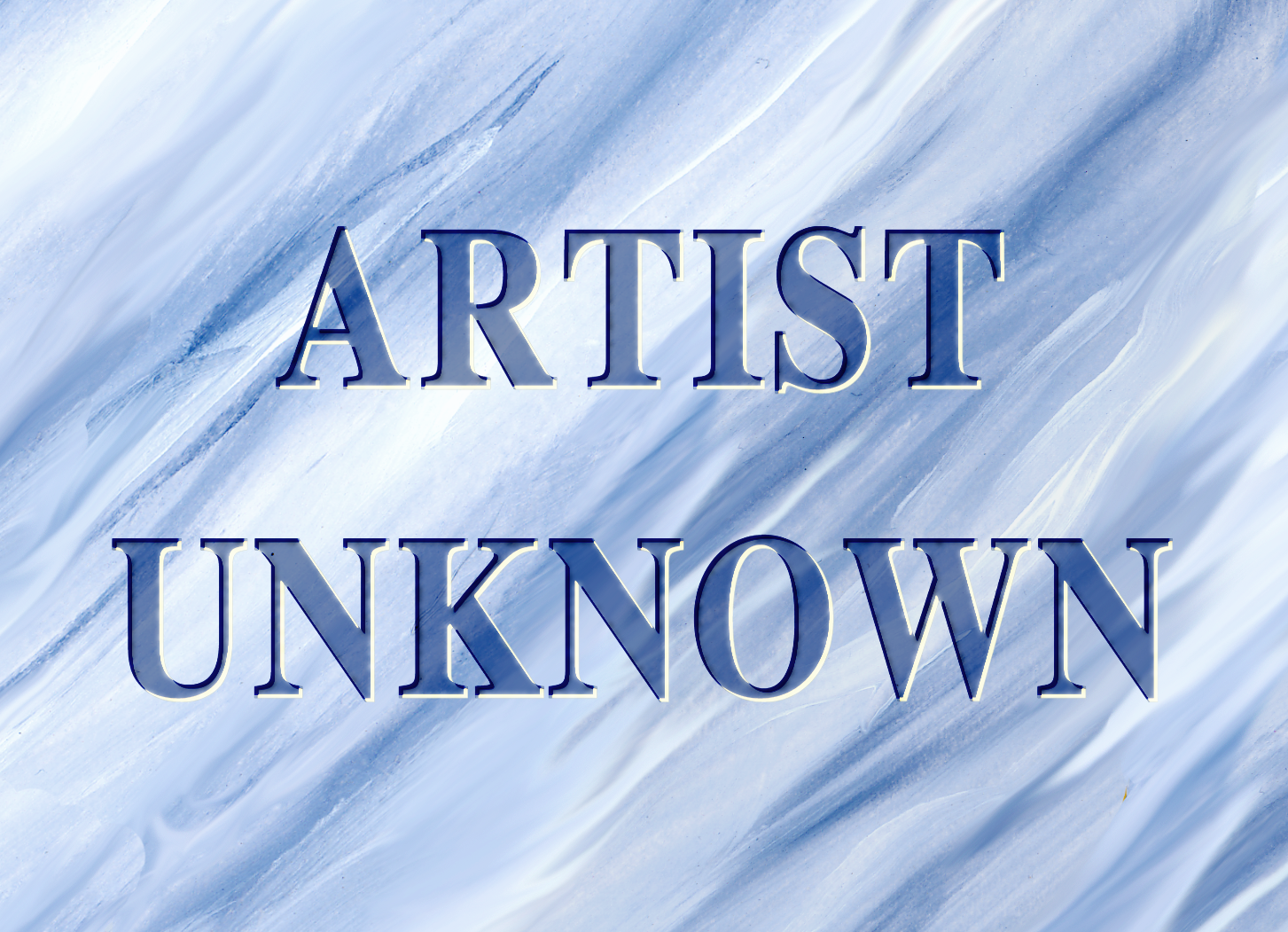
- The episode begins with Squidward at the Adult Learning Center, sighing with satisfaction behind a teacher's desk, wearing an artist hat.
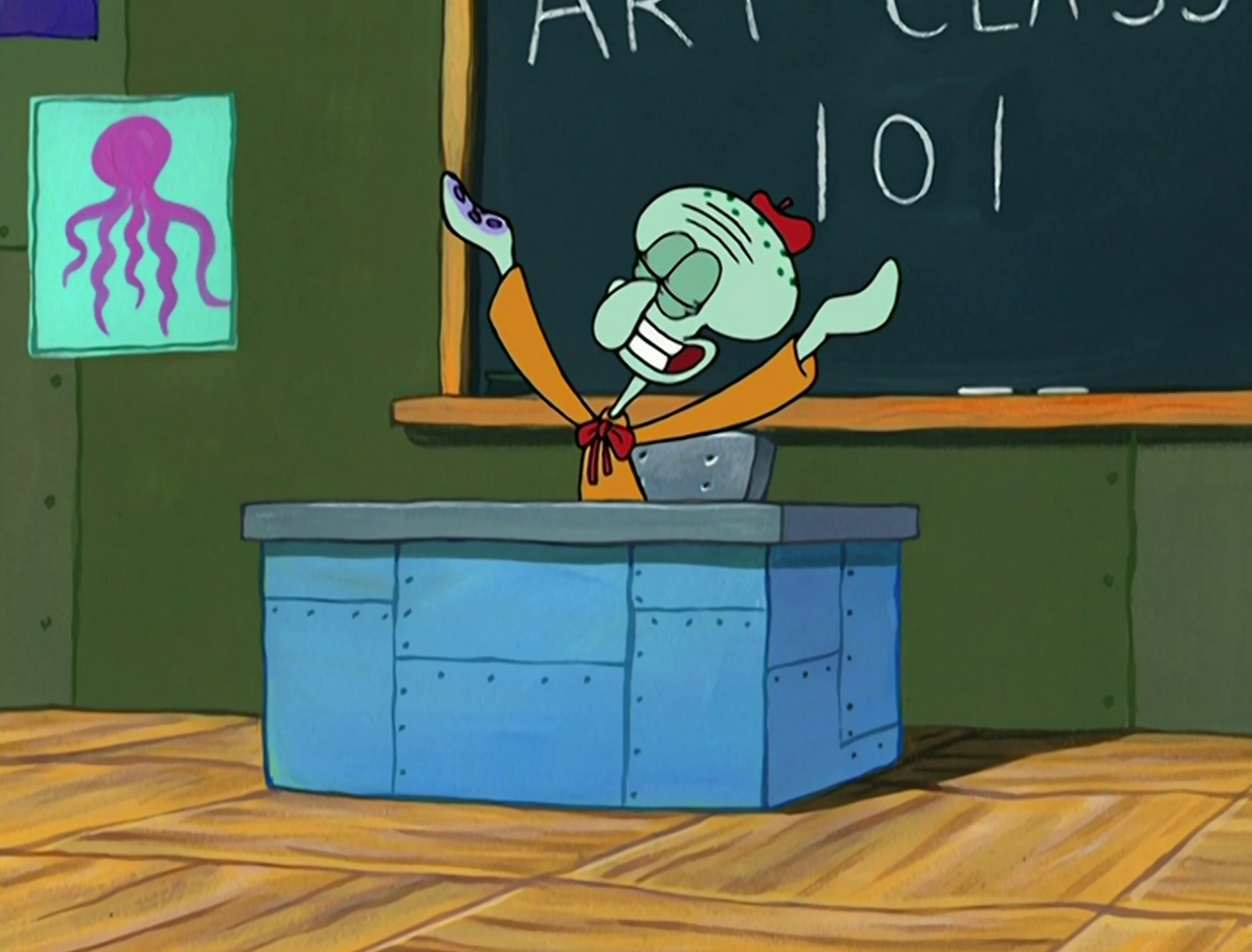 “Ah, how I have dreamed of this day: Mr. Tentacles, professor of art. What a marvelous opportunity for the people of Bikini Bottom. Bring me your huddled masses of bored housewives, and I will shape them in MY image.” It's nine AM, and he opens the doors to let the students in, but—horror of horrors!—his only student is SpongeBob.
“Ah, how I have dreamed of this day: Mr. Tentacles, professor of art. What a marvelous opportunity for the people of Bikini Bottom. Bring me your huddled masses of bored housewives, and I will shape them in MY image.” It's nine AM, and he opens the doors to let the students in, but—horror of horrors!—his only student is SpongeBob.
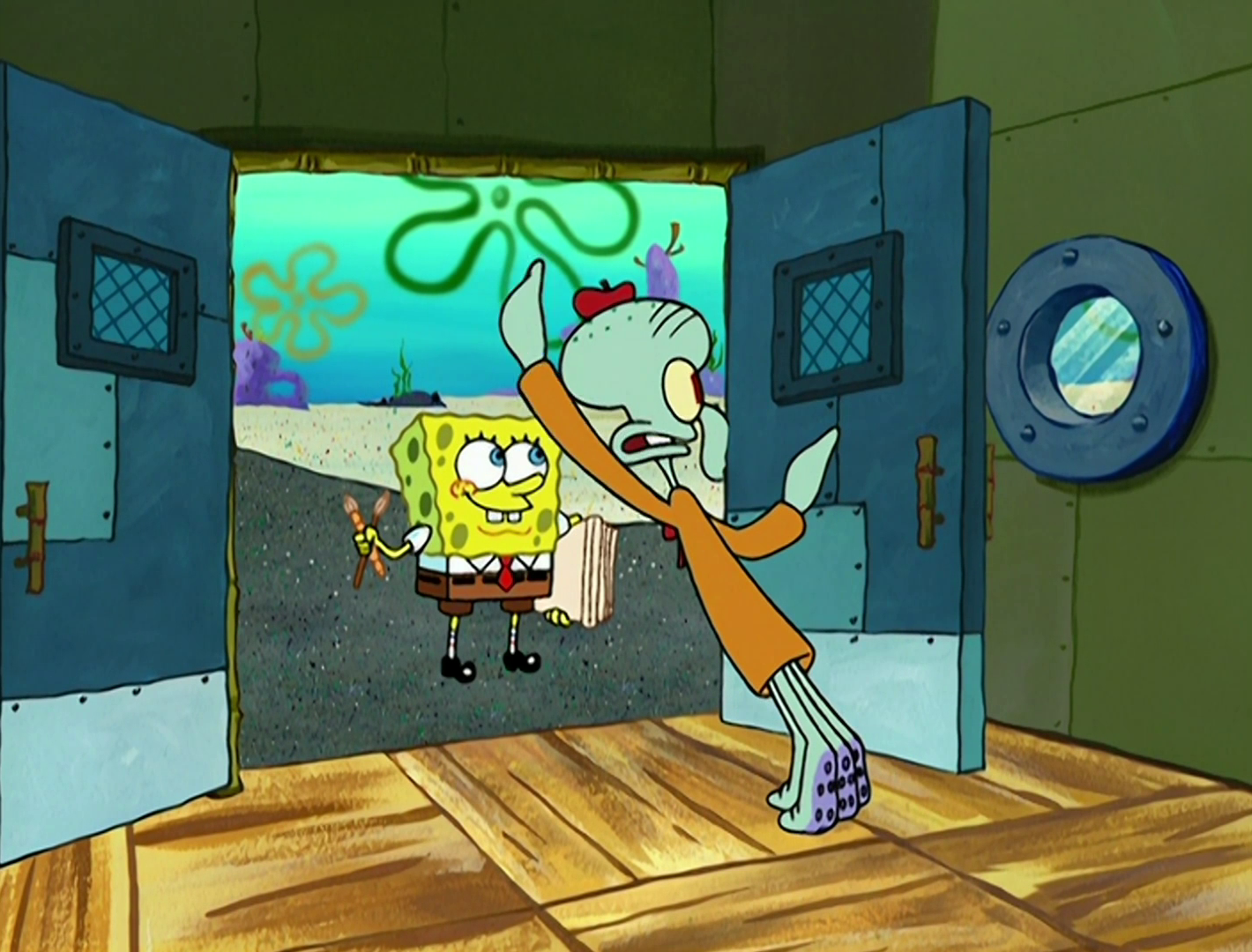
- Squidward starts teaching the class, but is thrown for a loop when SpongeBob draws a perfect circle.
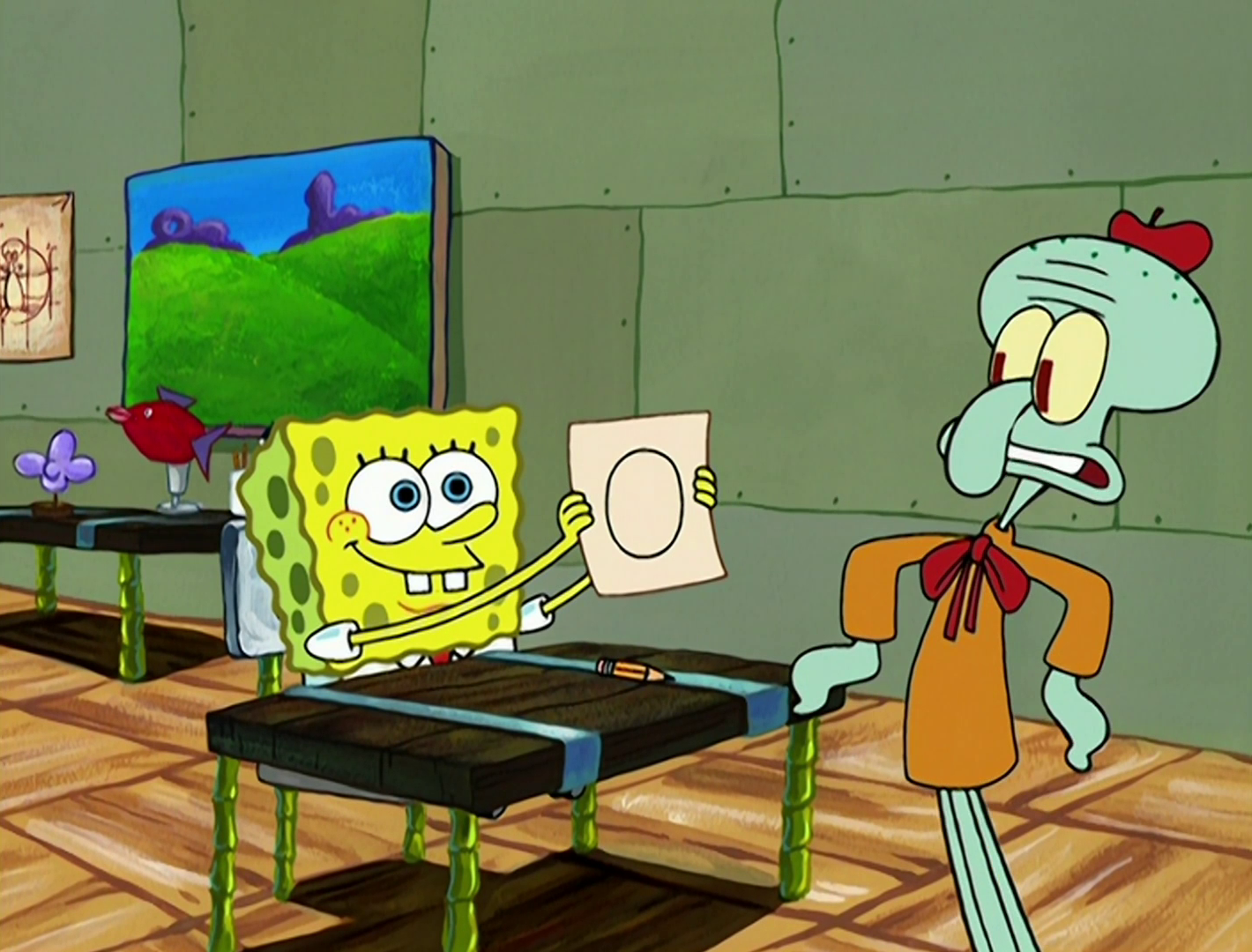 His method is ridiculous: draw a head construction in reverse.
His method is ridiculous: draw a head construction in reverse.
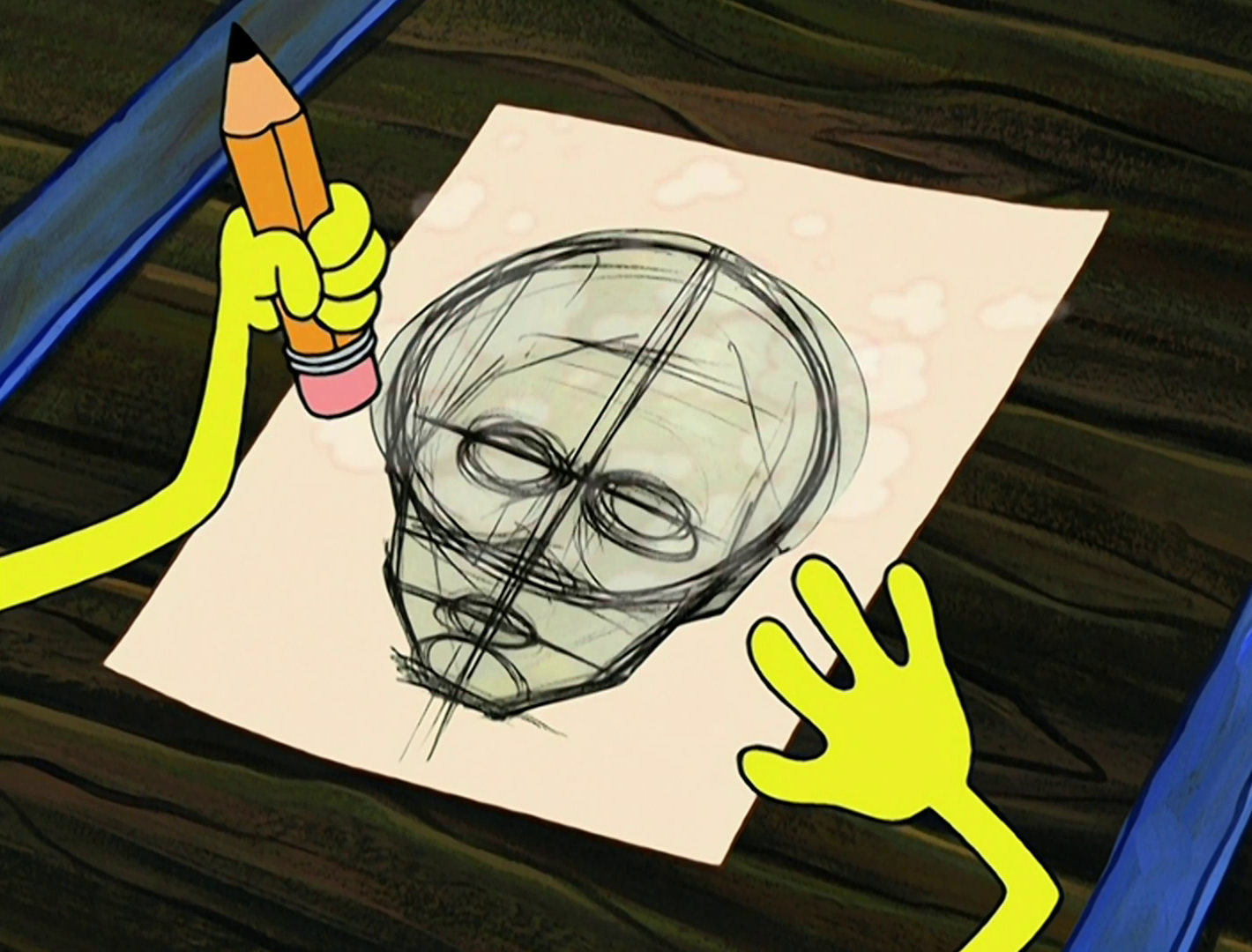 Squidward gets mad and balls up the paper: “Forget the circles.” SpongeBob also folds up paper—into a kinetic origami piece of SpongeBob and Squidward playing leapfrog.
Squidward gets mad and balls up the paper: “Forget the circles.” SpongeBob also folds up paper—into a kinetic origami piece of SpongeBob and Squidward playing leapfrog.
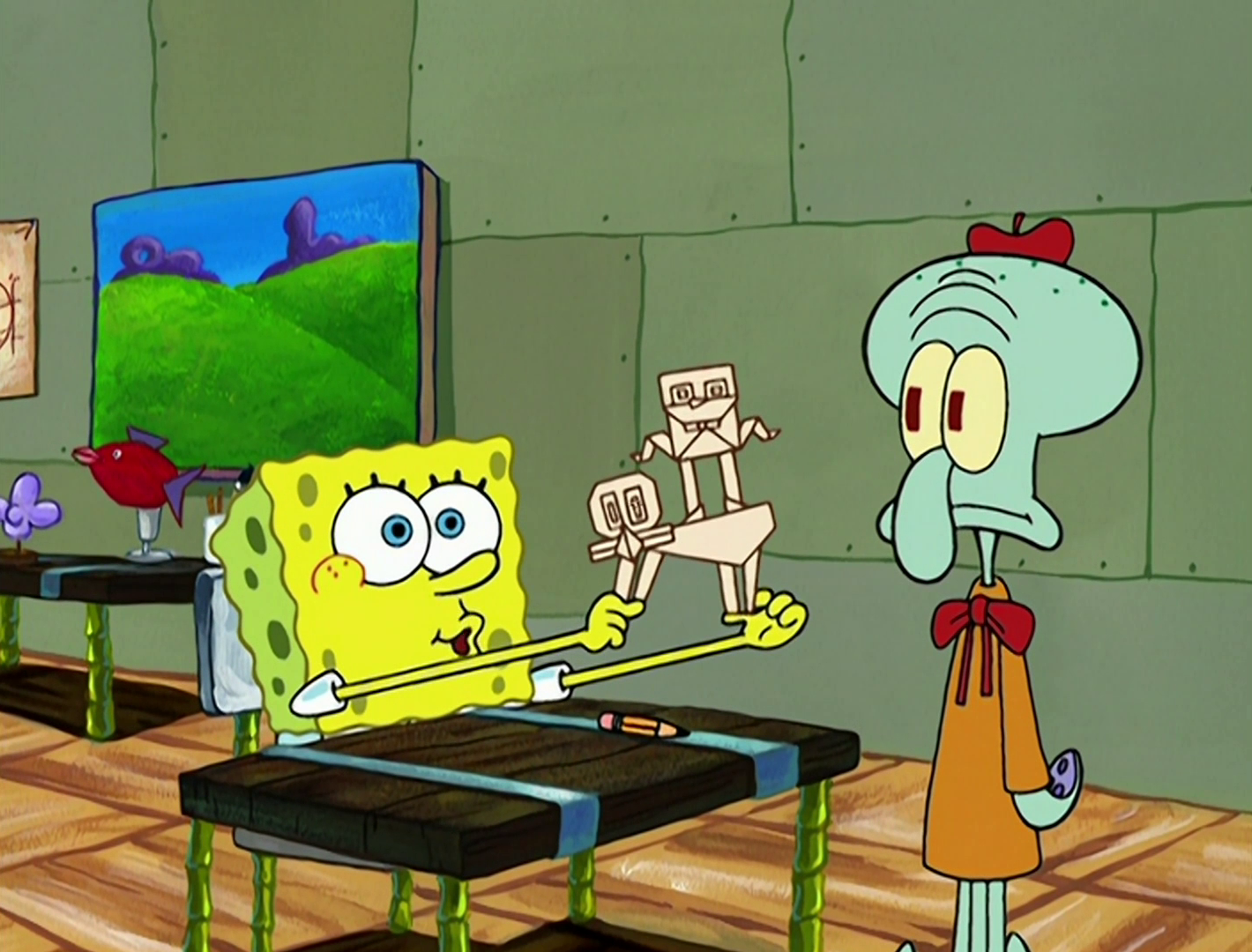 Squidward tears up the paper and SpongeBob makes a picture out of the scraps.
Squidward tears up the paper and SpongeBob makes a picture out of the scraps.

- We enter into the third sequence when Squidward starts teaching sculpture: Squidward's marble falls to pieces, but SpongeBob makes Michelangelo's David with one tap.
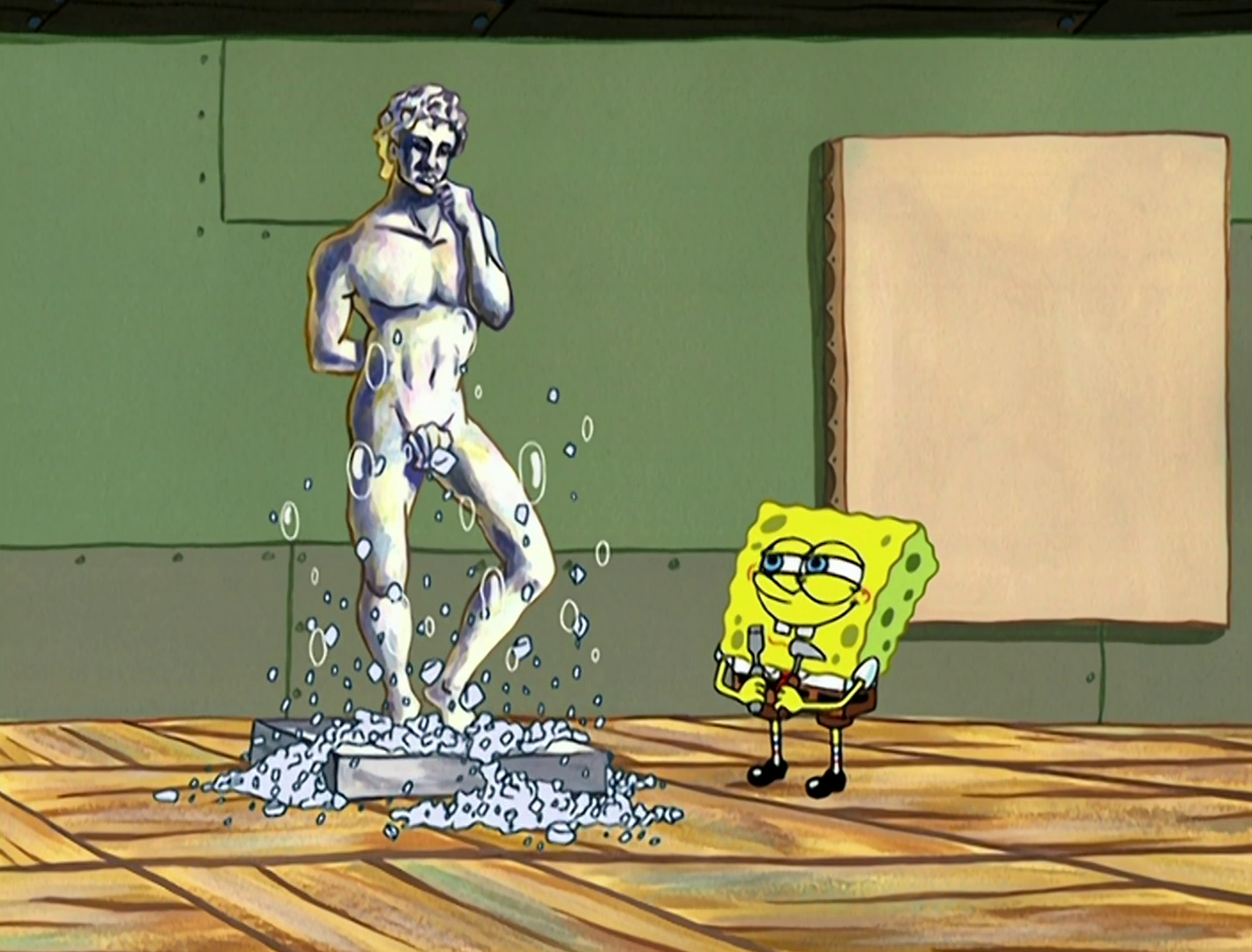 “It's beautiful!” Squidward says, his persona slipping a little. Grasping for something to criticize about the sculpture, he pulls out a book called The Rules of Art, and sticks a Squidward nose on David's head.
“It's beautiful!” Squidward says, his persona slipping a little. Grasping for something to criticize about the sculpture, he pulls out a book called The Rules of Art, and sticks a Squidward nose on David's head.
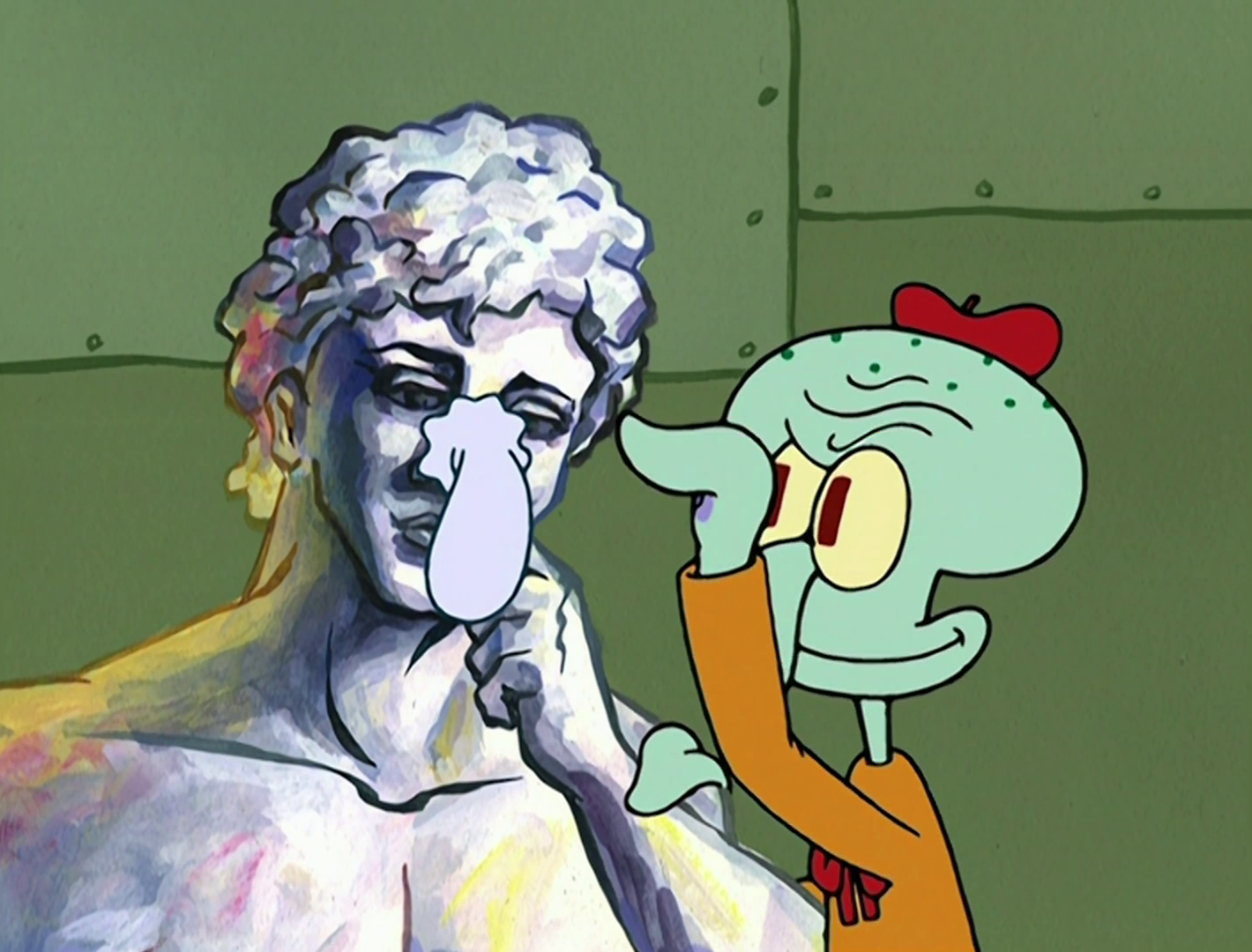 SpongeBob earnestly cries about how bad he is, although Squidward knows SpongeBob is a genius.
SpongeBob earnestly cries about how bad he is, although Squidward knows SpongeBob is a genius.
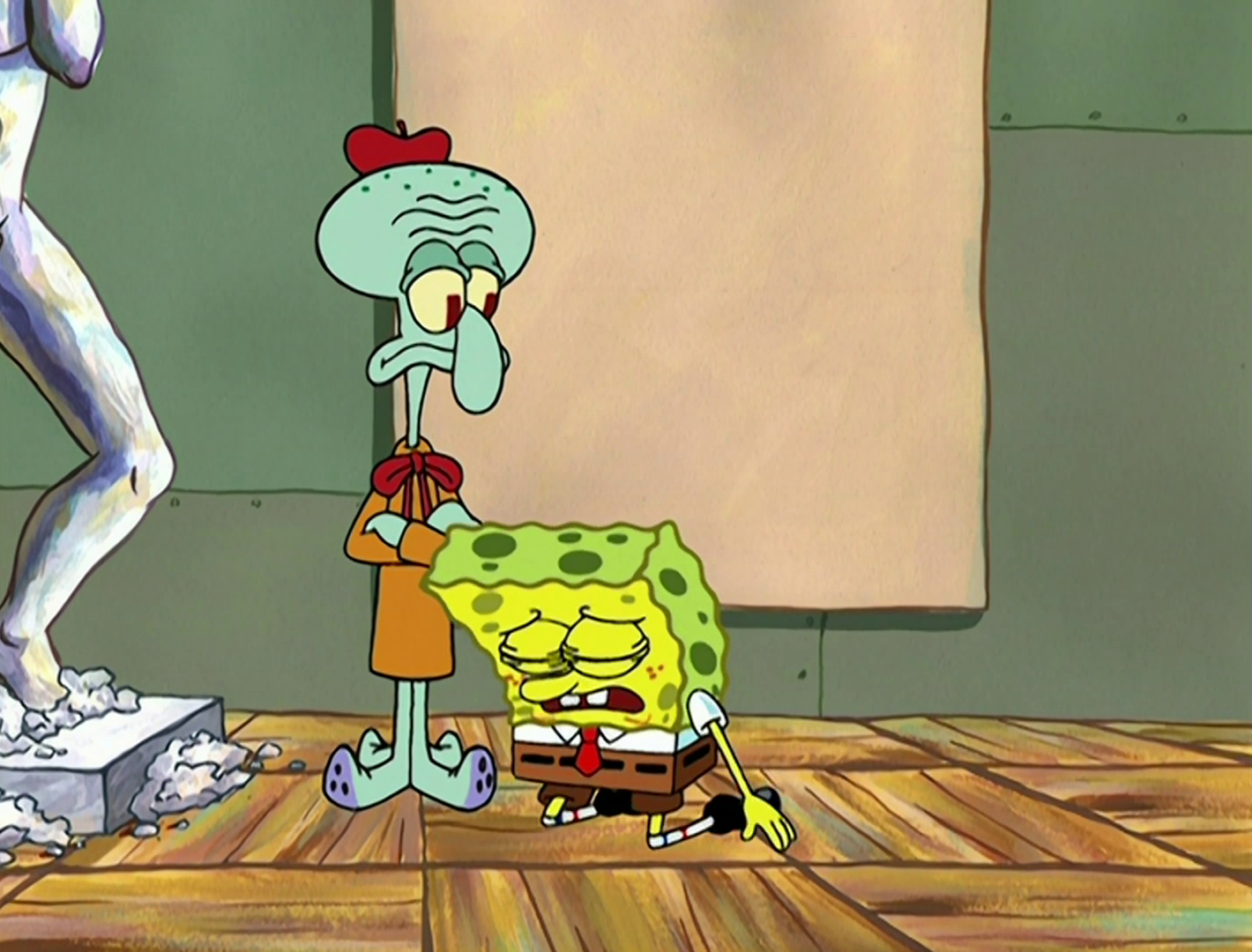 It's interesting here that SpongeBob saying what Squidward clearly wanted to hear doesn't make Squidward happy: he just looks conflicted and guilty.
It's interesting here that SpongeBob saying what Squidward clearly wanted to hear doesn't make Squidward happy: he just looks conflicted and guilty. - The art collector shows up, and Squidward takes credit for SpongeBob's piece.
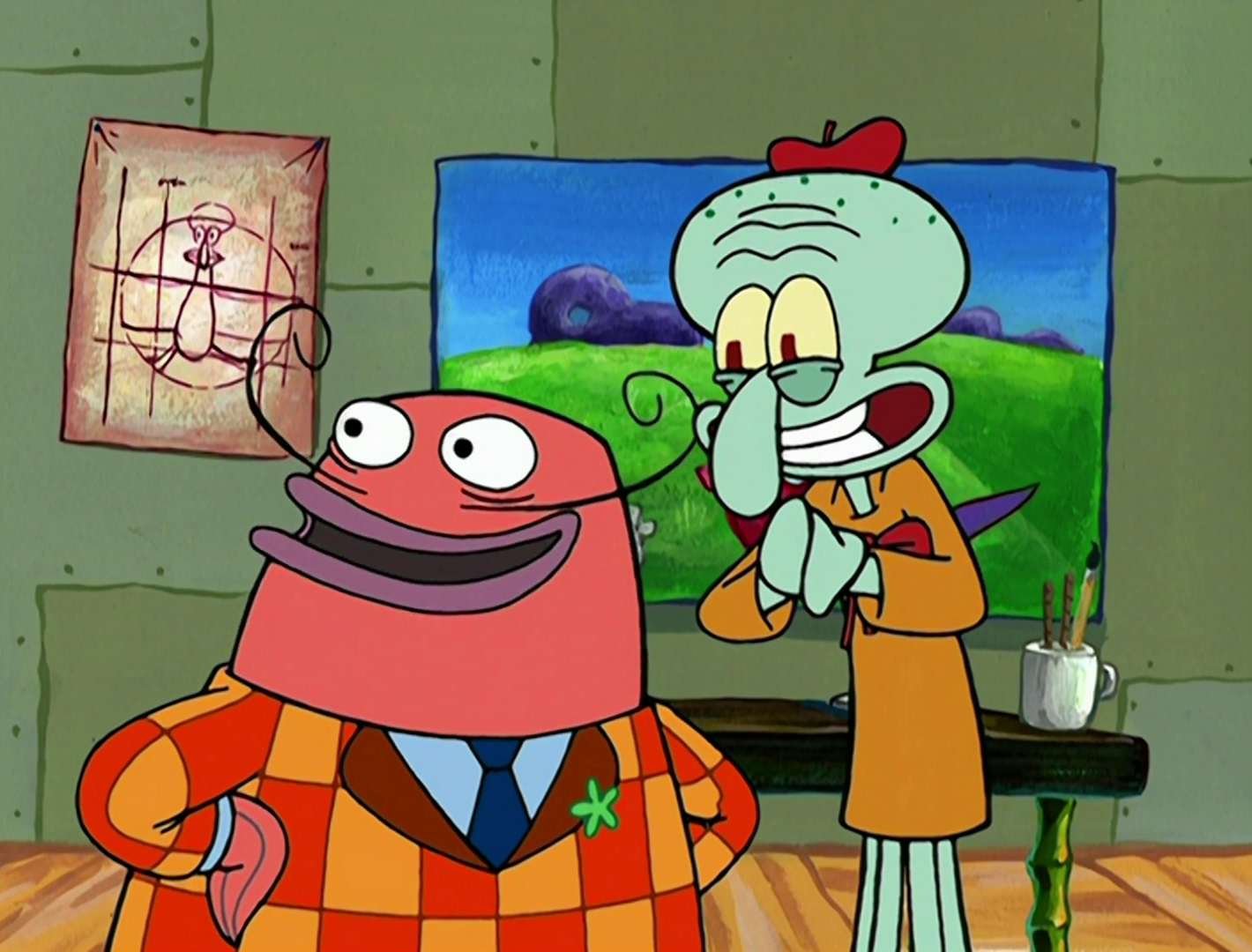 The statue gets broken, and Squidward promises the collector something that will knock his socks off. He finds SpongeBob in the dump. Squidward coaxes him back, but SpongeBob has lost his gift—BECAUSE he's adopted the rules of art!
The statue gets broken, and Squidward promises the collector something that will knock his socks off. He finds SpongeBob in the dump. Squidward coaxes him back, but SpongeBob has lost his gift—BECAUSE he's adopted the rules of art! - Squidward flies into a rage and destroys everything in his studio.
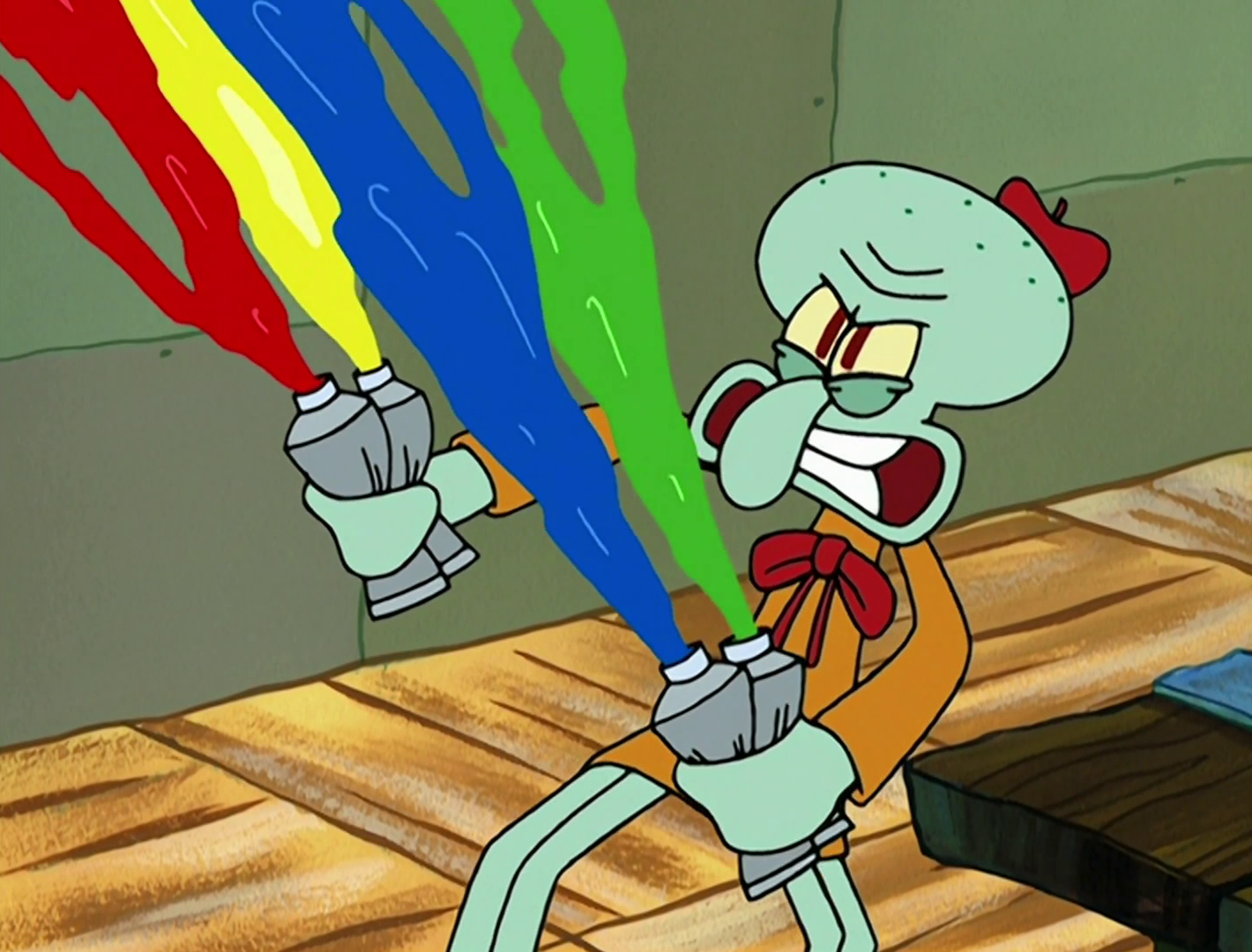 He leaves before he could discover that he accidentally made an even better David—but the janitor gets the credit.
He leaves before he could discover that he accidentally made an even better David—but the janitor gets the credit.
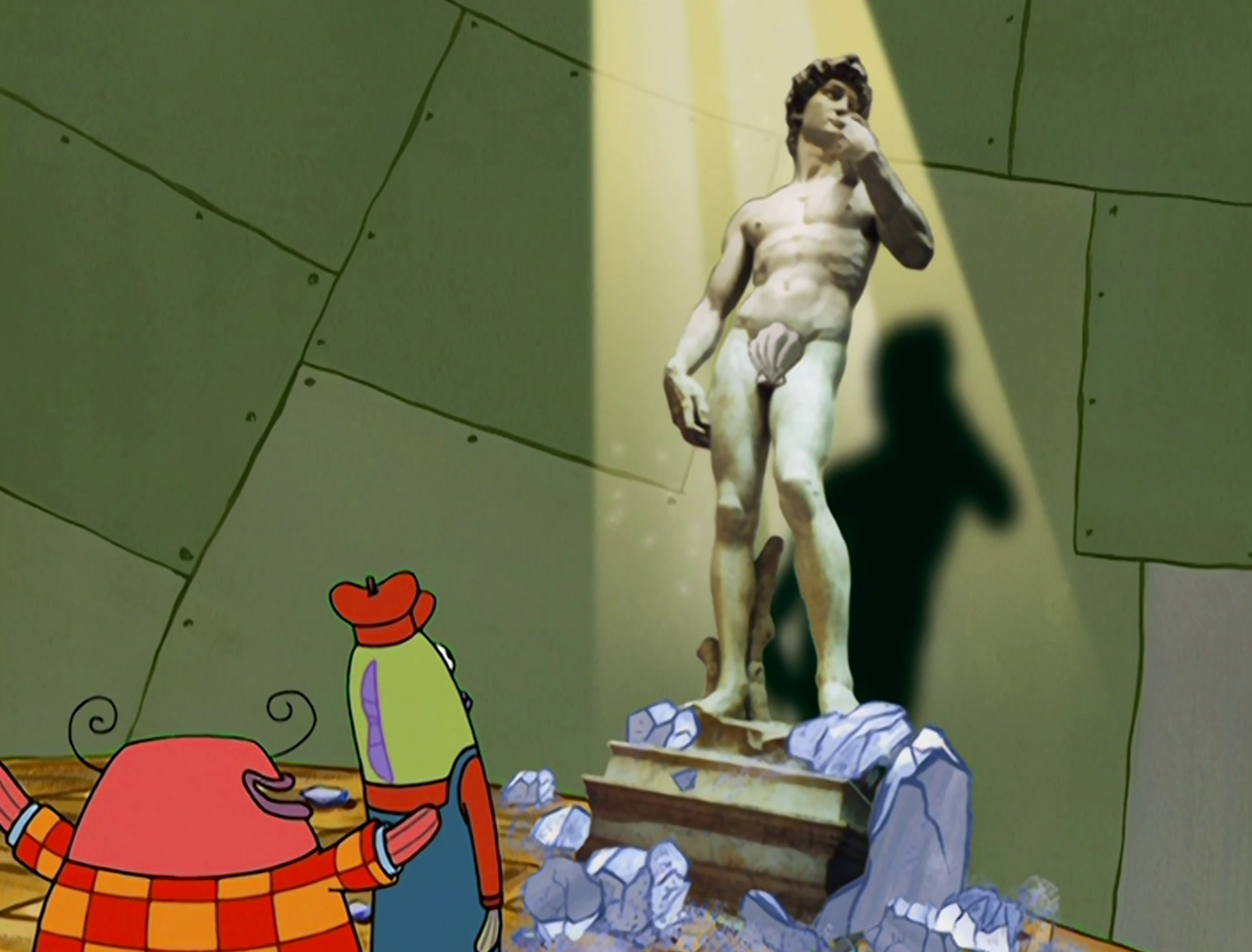
Have you noticed that body parts come off a lot in this episode? SpongeBob's hands come off and hide in a can.
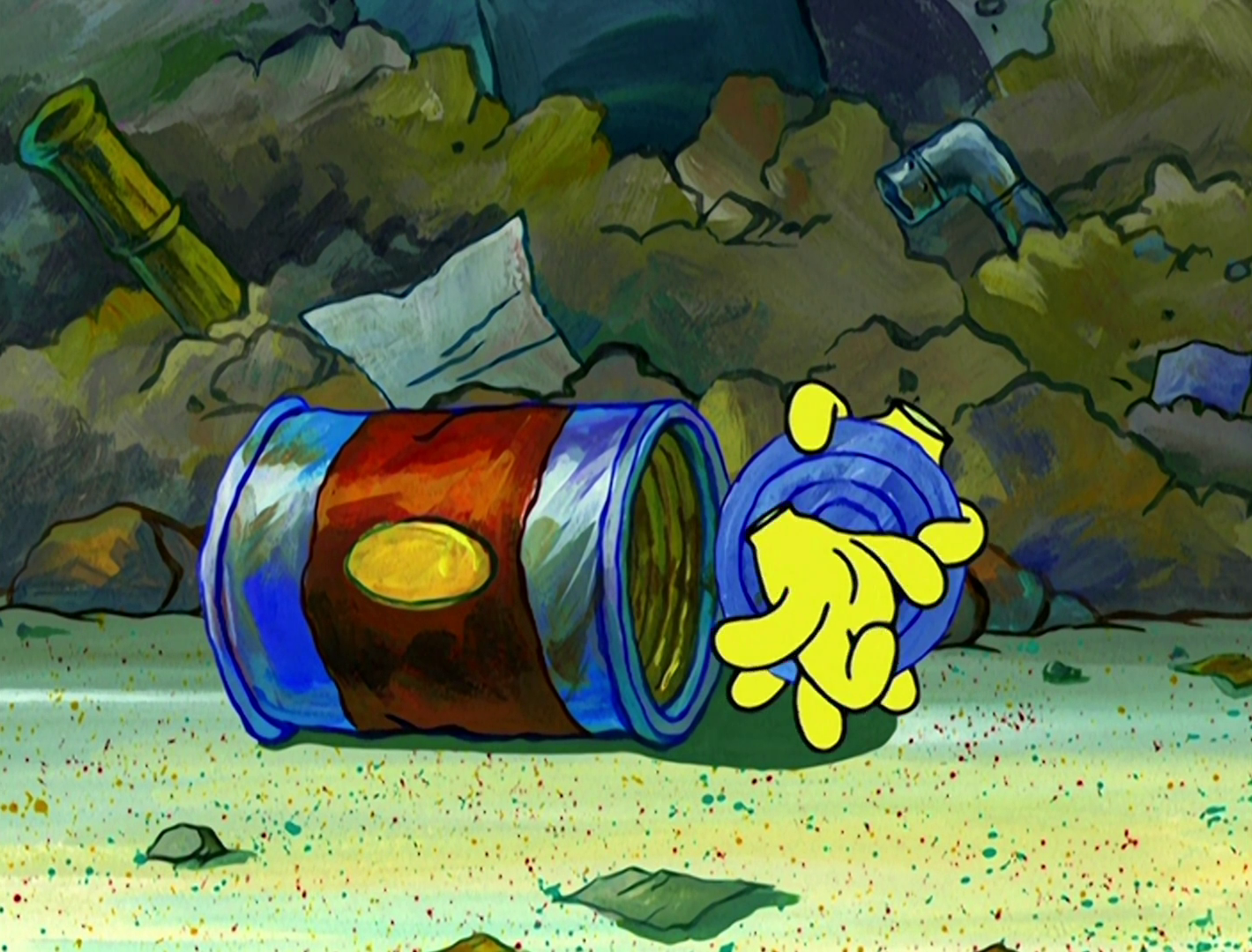 Squidward's artificial nose goes on and off the statue, and his real nose even drips off his face and plops onto the floor, when SpongeBob recreates The Rules of Art.
Squidward's artificial nose goes on and off the statue, and his real nose even drips off his face and plops onto the floor, when SpongeBob recreates The Rules of Art.
 I'm not going anywhere with this, but it reminds me of Jiří Trnka's The Hand, where a large disembodied hand invades a potter's little house and compels him to make replicas of itself.
I'm not going anywhere with this, but it reminds me of Jiří Trnka's The Hand, where a large disembodied hand invades a potter's little house and compels him to make replicas of itself.
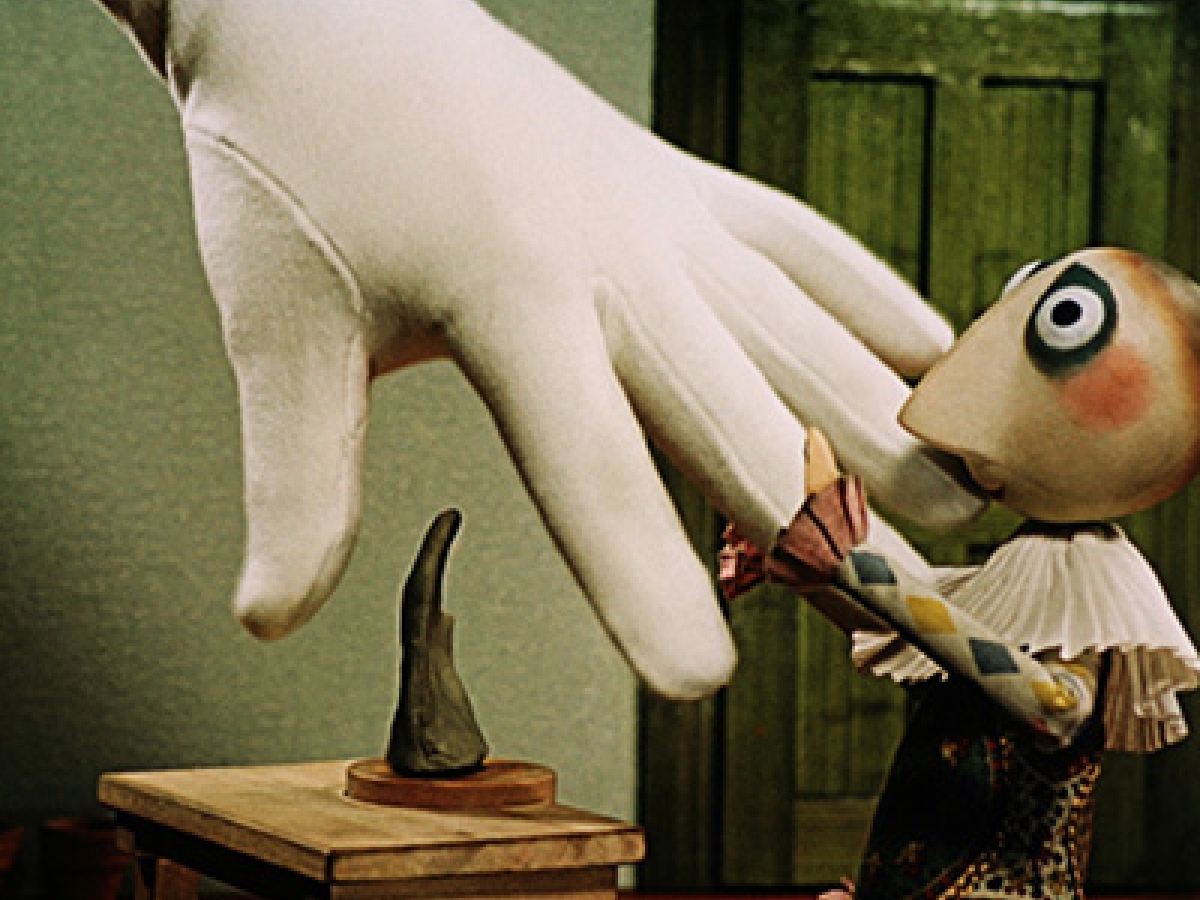
 Squidward does want to shape the huddled masses in his image, and his oeuvre is pretty much entirely squids, so maybe there's fruit for comparison there.
Squidward does want to shape the huddled masses in his image, and his oeuvre is pretty much entirely squids, so maybe there's fruit for comparison there.
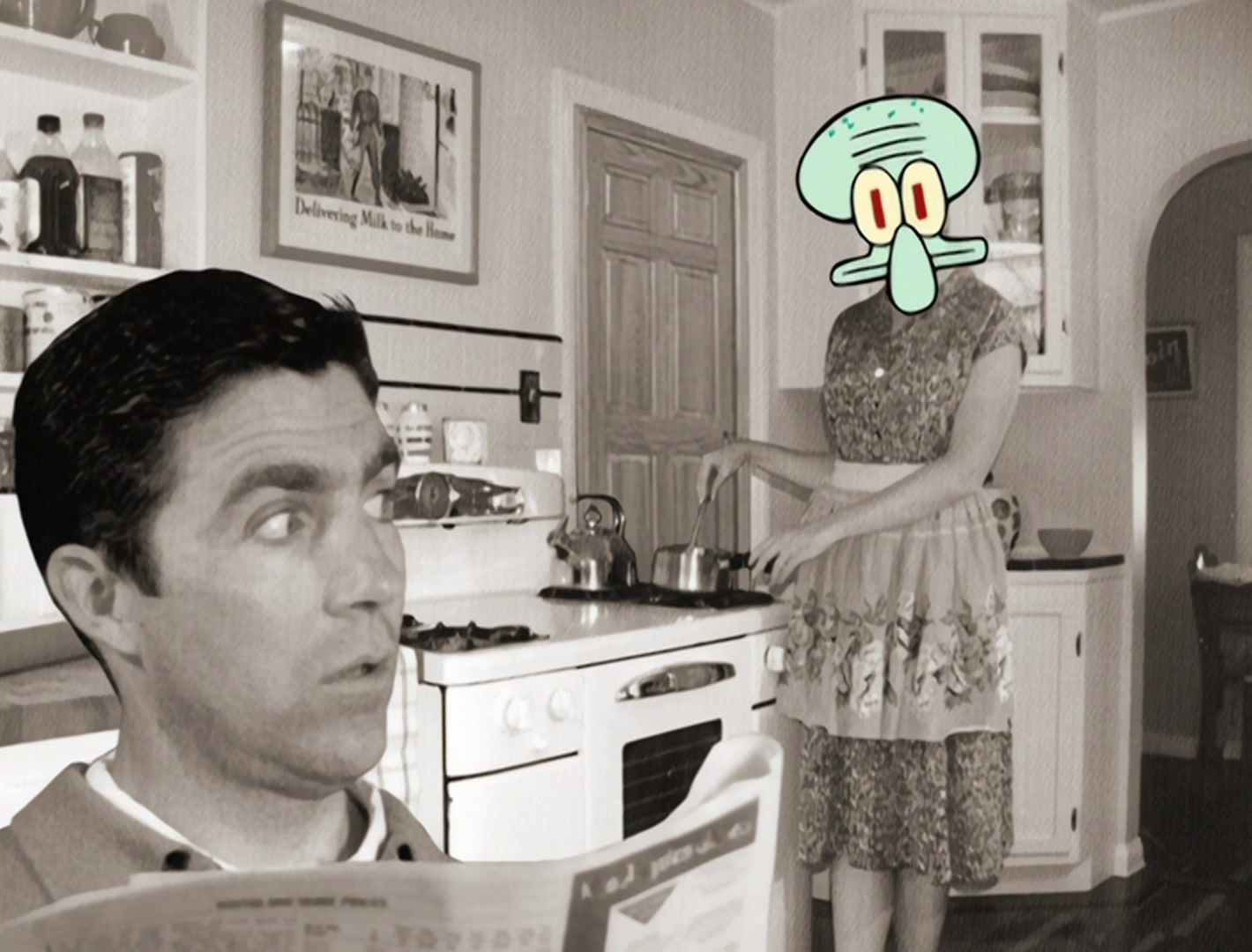
The main theme of the episode is—well, you hear different answers from different people. It could be about how narcissism makes you a rotten artist, or it could offer a parable about the damage the education system does to people's natural creativity. There's even—I can't believe this is real—a video essay called “This SpongeBob Episode Will Awaken Your Creativity.”
Here's a quote from it:
There's a SpongeBob episode that demonstrates exactly why the talents of the majority of people are not realized. What usually happens is: early in life we express our creativity through music, sports, or some other kind of artistic skill, and instantly fall in love with whatever that activity is. Then, one day, our hopes and dreams are shattered, and society, which can include our parents, teachers, coaches, or, quote, “friends,” refuse to support our artistic vision, and that hurts! It can also be traumatizing, believe it or not. So then what happens is, we fall into depression, basically give up on further developing that skill, but the irony is, we were actually the geniuses the whole time. There was something there that others didn't get. But this episode shows that there are people who will get it, who will understand why we intentionally design our art the way we do.
Is that how your childhood was? Taking up something, loving it at first sight, but getting it beaten out of you by the people in your life? Sorry about that, but I still mainly disagree with the thesis here. I think the episode is not a picture of childhood as kids experience it; it's an adult's fantasy about talent and innocence. Remember that nearly all fiction about childhood is written by adults looking back on it—-and we're very good at revising our memories to agree with our current prejudices.
Anyone who teaches little kids will see what's missing from the picture of childhood here. It's true that kids do play and invent constantly, but they're also pretty bad at everything, and scared to try anything unfamiliar. I once taught a girl who screamed and cried when she tried to cut out a paper horse, and snipped off its tail—-it took days of work to build up her confidence after that, and convince her that she wasn't just permanently bad at scissors forever. It's not “children have a natural confidence and creativity until you take it away from them”: it's “children think they're helpless until you show them they can do things for themselves.”
Childhood is brutal. Adults think that adulthood introduces terror, envy, hostility, and dishonesty into the untroubled Eden of happy childhood. But all that is there from the beginning. What adulthood introduces is the retroactive impression of a lost Eden. Innocent happy childhood never existed, the way Atlantis never existed: its invention was the invention of its having been lost.
With this in mind, we have a way to make an important distinction among stories about childhood. When childhood is all happy innocence, spoiled by adulthood, that tells us the story is probably from an adult's point of view. When childhood is all frustration, anxiety, and incomprehensible terror, that's the kid's point of view.
Now what's really interesting about SpongeBob SquarePants the show is that it tells both kinds of stories about the same character. As the people at Wisecrack point out in this video essay, SpongeBob himself is a deliberate blur between childhood and adulthood—we get episodes where he's hilariously incompetent (as when he takes driving lessons from Mrs. Puff), and episodes where he's hilariously competent—-as here. Artist Unknown shows SpongeBob through Squidward's eyes. In the logic of the episode, SpongeBob is an adult's dream of childhood: the stupid, happy, natural, creative genius, and Squidward is the sad hack whose permanent flaw is his self-awareness.
Wherever art comes from, SpongeBob seems to be born with easy access to it, but Squidward teaches it out of him. Squidward can only tap into that source of creativity when he destroys his supplies, squeezing the paint out and smashing the marble slabs—in the same way that Squidward could only blow a great bubble when he screamed into the bubble wand.
Some people believe art is really like this: a desperate scream of the unconscious, which we can only tap into when we're drunk, or sleep-deprived, or traumatized, or furious, or regressing to the primal state of childhood. I don't. Maybe my unconscious IS screaming out to me, but I think this is a pretty unhealthy way to think about art. There's nothing wrong with trying to learn technique, there's nothing glorious about damaging your mind and body, or regressing to childhood: growing up is not going to kill your creativity. A lot of people who work on improving their art do say they go through a period of unlearning, where their new art seems worse than their old art. And they worry, the way Squidward worries about SpongeBob, that by following technique they killed off the source of their art. But then they keep practicing, they keep learning, and they get better again.
I'm going to say a lot more about this episode in a future post about Squidward's art.